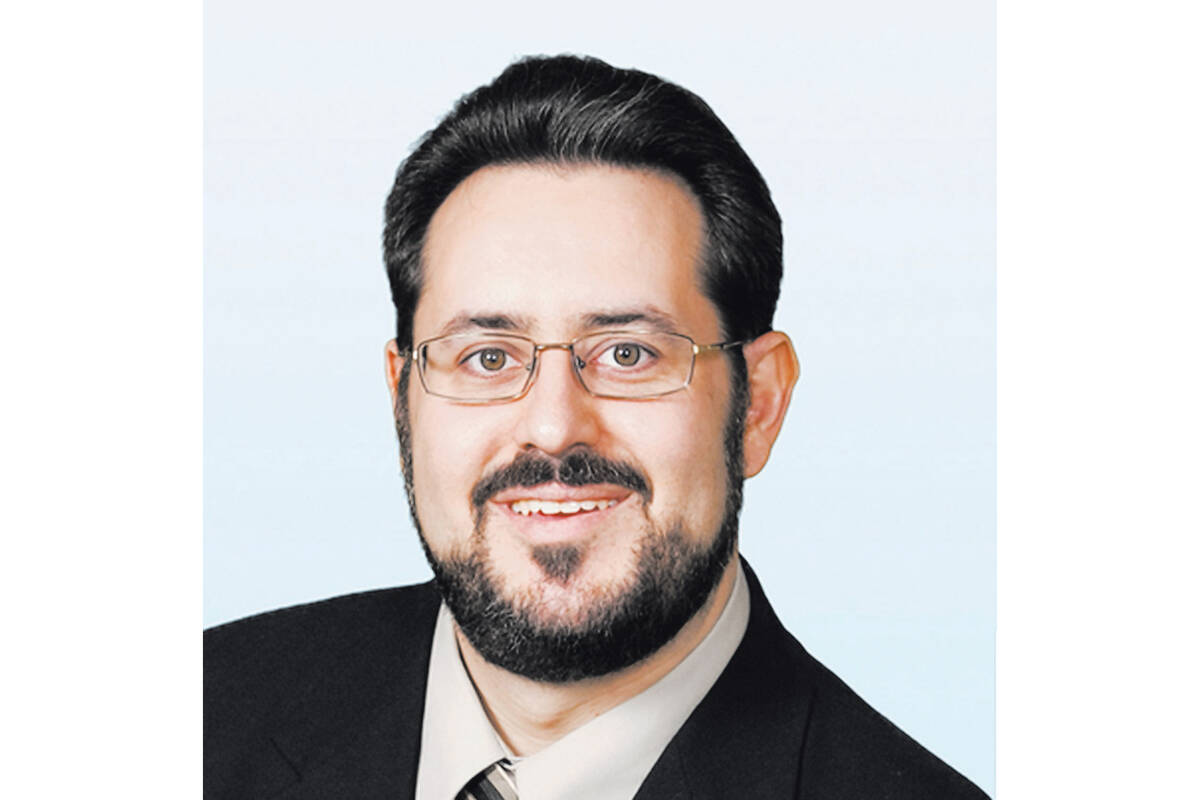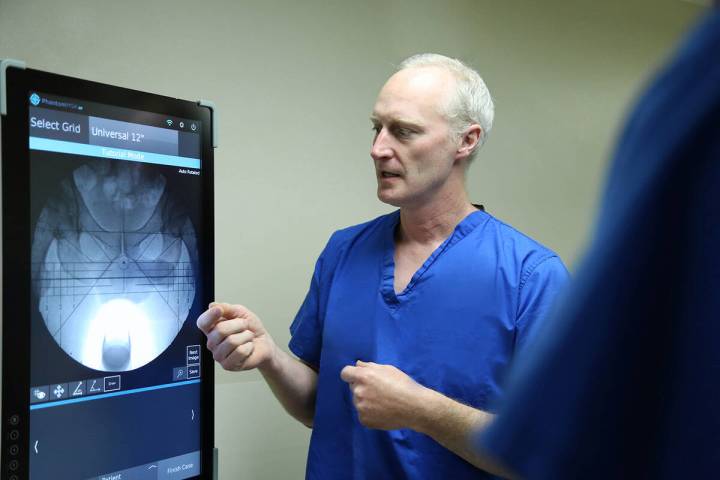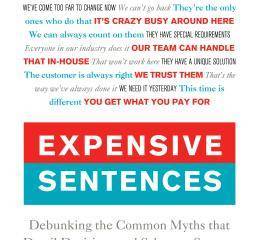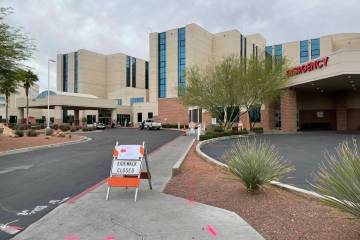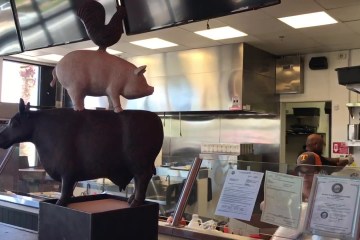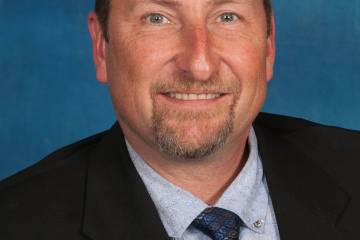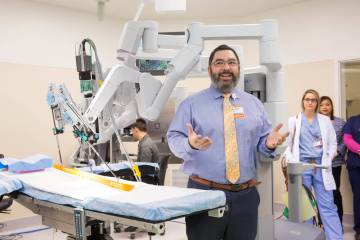The Las Vegas health care sector is showing it’s not as vulnerable to downward pressure from the economy like tourism and other industries as population growth continues to fuel that sector.
During the past year, Southern Nevada’s health care sector added 6,600 jobs, according to state tallies. That includes 2,600 jobs in the ambulatory subsector, while hospital jobs remain stable. Taxable sales for hospitals increased more than 15 percent in the latest 12-month tally available, according to Collier Research Director John Stater.
“More positive news this quarter came in the form of increased employment in the health care sector, and the fact that the health care sector is not as vulnerable to economic disruption as are other sectors of the economy,” Stater said. “While vacancy rates may remain relatively high in 2025, we think renewed demand will whittle them down by the end of the year.”
Stater said the vacancy of a large class B medical office space impacted Southern Nevada’s medical office market in the first quarter of 2025, producing negative 211,481 square feet of net absorption and sending the vacancy rate to 9.9 percent. United Healthcare moved out of a six-story medical office building.
No new medical office buildings were completed in Southern Nevada during the first quarter, but one project totaling 14,950 square feet was scheduled for completion in the second quarter, Stater said. Another 46,950 square feet of medical office space is scheduled for completion over the next 12 months.
“There’s just not a lot of movement within the medical sector office but a few other things, too,” Stater told the Business Press. “It seems like in the first quarter, people were on a little bit of a pause. Some of the fundamentals look good for medical office because if we’re adding people to the valley, it means we’re adding demand for medical treatment and therefore medical office space.”
Offices for businesses aren’t the same as medical offices because of the impact of the internet and remote work that don’t translate to the health care sector.
“You’re not going to have doctors working from home,” Stater said. “They’re going to need to come into the doctor’s office so there’s proper facilities for the patients. We saw some negative absorption due to one large building vacated by United Health that was primarily using it for back office. I think the intention is to market it as medical office space. If you took that away, it would have been a flat quarter with nothing major happening. I think we will see better demand down the road for medical offices this year.”
The last major disruption in the sector centered around the debate around the Affordable Care Act in 2009 in which doctors waited to see what was going to happen with the federal legislation during a recession.
“They just paused,” Stater said. “They weren’t giving up their space or expanding. They wanted to see what was going to happen. Once it got passed, we saw a lot more activity as doctors knew what they could expect. Even back then we didn’t see a bad market for medical office space. As long as we have a growing population and demand for medical services we’re going to see some growth in the medical office segment.”
With the new Trump Administration, there’s also waiting to see what would happen, and Stater expects a pick up now that there’s been settling down with concerns over the economy. Demand will pick up the rest of the year, he added.
“It seems like there was a lag in general as consumers were waiting to see what would happen and now things are starting to move again,” Stater said.
High-end Class A medical office buildings posted the strongest net absorption this quarter at 11,160 square feet and had a 8.6 percent vacancy rate, Stater said. Class C buildings had the lowest vacancy rate among medical office classes at 6.8 percent, while Class B buildings were 13.7 percent vacant.
Vacancy decreased in the North Las Vegas, southwest and west central submarkets and increased in the downtown, east Las Vegas, Henderson and northwest submarkets. Vacancy remained the same in the Airport submarket, Stater said.
The weighted average asking rental rate for medical office space was $2.87 per square foot during the first quarter, an increase on both a quarterly and annual basis. This was the highest asking rental rate for medical office space since Colliers started tracking the medical office market in 2013, Stater said.
The valley’s highest asking rental rate for medical office was in the northwest valley at $3.29 per square foot. It was followed by the Henderson submarket at $2.87 per square foot, Stater said.
There were three investment sales in the first quarter totalling $7.8 million involving more than 52,000 square feet, Stater said. The average sales price was $146 per square foot.
Sales among users was $15.6 million in four sales totaling 38,000-plus square feet with an average price of $402 per square foot.
Commercial real estate agent Bob Barnhart said over the last 24 months they’ve seen a great level of activity from concrete tilt-ups to offices transforming into surgery centers, which recently happened at 7475 W. Sahara Ave. Drive. Sherif Hawarey paid $15 million for the 25,000-square-foot 20-year-old building that will be transformed into a surgery center, medical clinic and urgent care facility.
“For us, clients are buying up or expanding outward,” Barnhart said.
While investors are nervous about buying office buildings given that vacancy rate, Barnhart said there are people looking at opportunities to transform buildings into apartment lofts, medical offices or something else that’s new.
“That’s the buzz we’re seeing with our investment group and owner users,” Barnhart said.
When there’s a shortage of doctors in Southern Nevada that means practices are expanding and bringing in new physicians into their offices from out of state, Barnhart said.
“It brings in new jobs and opportunities to Nevada,” Barnhart said.

